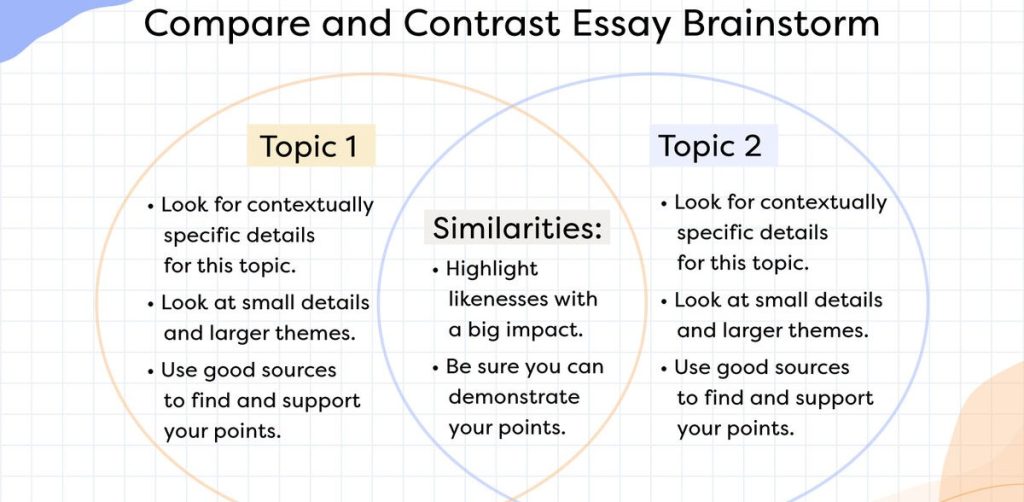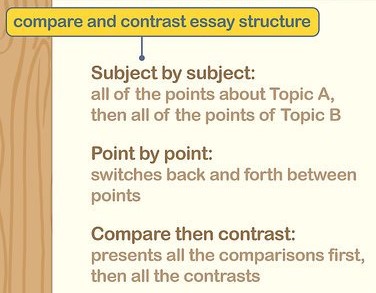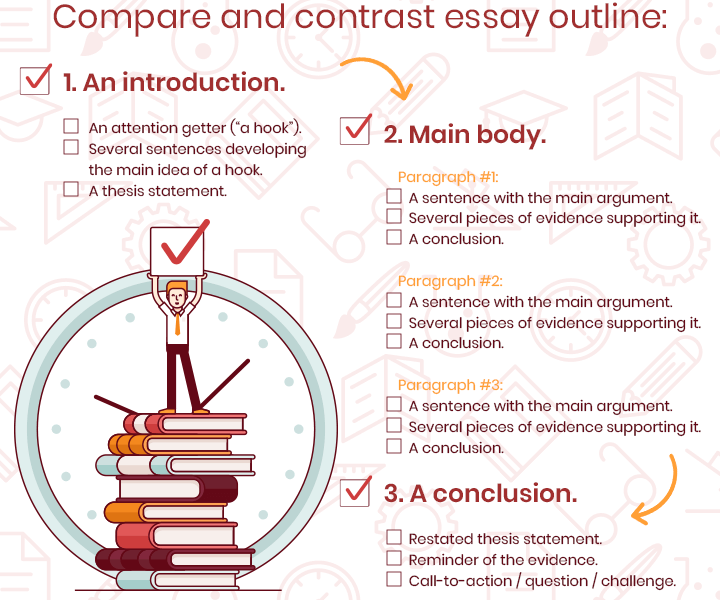
Table of Contents
Compare and contrast nursing essays are popular assignments in nursing schools, demanding a thoughtful analysis of two different concepts, theories, practices, or even historical figures. This essay type presents a unique opportunity for students to showcase their critical thinking skills, demonstrate their understanding of complex nursing issues, and develop persuasive arguments. While the task may seem daunting, approaching it strategically can transform the essay from a dreaded assignment into a rewarding exploration of nursing knowledge.
This article will delve into a comprehensive guide for crafting compelling compare and contrast nursing essays. We will explore various strategies for choosing appropriate topics, developing strong arguments, and ensuring a cohesive and impactful structure.
The Key Elements of Compare and Contrast Nursing Essays
An ideal compare and contrast nursing essay analyzes the similarities and differences between two or more subjects. It aims to provide a deeper understanding of the subjects by highlighting their commonalities and distinguishing features.
Structure of a Compare and Contrast Essay:
- Introduction:
- Briefly introduce the two subjects you will be comparing and contrasting.
- State your thesis statement, which clearly outlines the main point of comparison or contrast.
- Body Paragraphs:
- Each body paragraph should focus on a specific point of comparison or contrast.
- Use clear and concise language to explain the similarities and differences between the subjects.
- Provide supporting evidence, such as examples, statistics, or expert opinions.
- Conclusion:
- Summarize the main points of comparison and contrast.
- Restate your thesis statement in a new way.
- Offer a final thought or insight about the subjects.
Example:
Compare and contrast nursing essays might analyze the similarities and differences between two different nursing specialties, such as pediatric nursing and geriatric nursing. The essay could compare their patient populations, required skills, and job responsibilities.
Example of a Thesis Statement:
- Compare and contrast nursing essays: While both pediatric and geriatric nurses provide compassionate care, their approaches differ significantly due to the unique needs of their patient populations.
Truly powerful compare and contrast nursing essays combine a thoughtful approach with clear communication and a strong argument:
- Strong thesis statement: A clear and concise thesis statement guides the reader and presents your unique perspective.
- Effective organization: A well-structured essay, utilizing either the point-by-point or subject-by-subject approach, ensures a logical and coherent flow of ideas.
- Compelling evidence: Supporting your arguments with evidence from reputable sources strengthens your credibility and provides a solid foundation for your analysis.
- Clear and concise language: Avoid jargon and use clear language to effectively communicate your ideas to the reader.
- Engaging writing style: Use vivid examples, relatable experiences, and impactful language to make your essay more engaging and memorable.
- Thoughtful conclusion: Conclude your essay with a strong reiteration of your thesis, a summary of key points, and a final reflection on the significance of your findings.

Steps to Crafting Compelling Compare and Contrast Nursing Essays
1. Choosing the Right Topic for Your Nursing Essay
The first step in writing any successful essay is selecting an appropriate topic. For compare and contrast nursing essays, the ideal topic should:
- Offer a rich ground for comparison: The two concepts, theories, or practices you choose to compare should have significant similarities and differences that allow for insightful analysis. For instance, comparing and contrasting the nursing care models of Florence Nightingale and Dorothea Orem reveals distinct approaches to patient care, offering valuable insights into the evolution of nursing practice.
- Align with your course material: The chosen topic should be relevant to the specific course you are taking and align with the learning objectives. This ensures that your essay demonstrates your understanding of the course content and contributes meaningfully to your academic journey.
- Engage your interest: A topic that sparks your curiosity will motivate you to delve deeper into research and develop a compelling argument. Choosing a topic you are genuinely interested in will make the writing process more enjoyable and yield a more impactful final product.
2. Understanding the Core of Comparison and Contrast:
The heart of compare and contrast nursing essays lies in highlighting the similarities and differences between the two chosen subjects. This requires a meticulous understanding of each subject’s core components, key features, and underlying principles.
3. Developing a Clear Thesis Statement:
The thesis statement serves as the central argument of your compare and contrast nursing essays. It should explicitly state the main point you are trying to make about the relationship between the two subjects.
- Focus on a clear argument: Your thesis statement should not simply list similarities and differences. Instead, it should present a unique perspective on the relationship between the two subjects. For example, a thesis statement for a compare and contrast nursing essay on the use of electronic health records (EHRs) and paper charts could argue that EHRs offer greater efficiency but present challenges in data security.
- Maintain clarity and conciseness: Avoid jargon and complicated language. A clear and concise thesis statement will guide your reader and provide a roadmap for your essay’s development.
4. Selecting a Powerful Organizational Structure:
Structuring your compare and contrast nursing essays effectively is crucial for presenting a cohesive and impactful argument. Two common organizational structures can be used:

a) Point-by-Point Comparison:
This structure compares and contrasts the chosen subjects based on specific points or criteria. For each point, you analyze both subjects, highlighting their similarities and differences.
- Example: A compare and contrast essay on patient-centered care models could use this structure to analyze each model’s approach to patient education, decision-making, and communication.
b) Subject-by-Subject Comparison:
This structure dedicates separate sections to each subject, exploring their key features and arguments before drawing comparisons and contrasts.
- Example: A compare and contrast essay on the nursing theories of Maslow’s Hierarchy of Needs and the Theory of Self-Care could first discuss Maslow’s theory, then delve into Orem’s theory, and finally draw comparisons and contrasts between the two.
5. Gathering and Analyzing Evidence for Your Compare and contrast nursing essays:
To support your arguments and strengthen your essay, it is crucial to gather relevant evidence from reputable sources. This includes:
- Peer-reviewed journals: These provide the most credible and up-to-date research findings, offering a strong foundation for your analysis.
- Nursing textbooks: These offer comprehensive overviews of key concepts and theories in nursing.
- Professional guidelines and standards: Organizations like the American Nurses Association (ANA) provide valuable insights into best practices and ethical considerations in nursing.
- Case studies: These provide real-world examples and insights into the application of different nursing theories or practices.
6. Writing with Clarity and Conciseness:
Effective writing is key to successful compare and contrast nursing essays.
- Use clear and concise language: Avoid jargon and overly complex sentence structures. Focus on communicating your ideas clearly and directly.
- Use transitions effectively: Transitions are essential for guiding the reader through the essay, connecting ideas, and ensuring a smooth flow of thought. Use transition words like “similarly,” “however,” “on the other hand,” and “in contrast” to signal the relationship between different points.
- Provide specific examples: Use relevant examples from nursing practice, research findings, or historical events to illustrate your arguments and make your analysis more engaging and relatable.
7. Mastering the Art of Comparison and Contrast in Your Essay:
The core of a compare and contrast nursing essays lies in demonstrating your understanding of both similarities and differences. While emphasizing contrasts is crucial, remember to also acknowledge similarities to reveal a deeper understanding of the relationship between the chosen subjects.
- Emphasize the ‘Why’ Behind Similarities and Differences: Instead of simply stating that two subjects are similar or different, explain why these similarities or differences exist. Explore the underlying principles, theories, or historical context that contribute to these patterns.
- Avoid Oversimplification: Refrain from presenting a simplistic “good vs. bad” comparison. Acknowledge the strengths and limitations of each subject, recognizing that both can contribute valuable insights to the field of nursing.
8. Conclusion: Summarizing and Reflecting in Compare and Contrast Nursing Essays:
The conclusion of your compare and contrast nursing essays should reiterate your thesis statement, summarize the key comparisons and contrasts you have explored, and provide a final reflection on the significance of your findings.
- Restate the thesis statement: Reinforce your main argument by briefly restating your thesis statement in a way that emphasizes the insights you have drawn from your analysis.
- Summarize key points: Summarize the most important similarities and differences you have discussed, highlighting their impact on nursing practice or understanding.
- Offer a reflection: Conclude your essay with a thoughtful reflection on the broader implications of your findings. Consider the future directions for research, clinical practice, or the evolution of nursing knowledge in light of your analysis.

9. Revising and Editing for Clarity and Impact:
After drafting your essay, take the time to revise and edit your work meticulously. This final stage is crucial for ensuring clarity, conciseness, and impact:
- Check for clarity and coherence: Ensure that your arguments flow logically, your ideas are well-supported, and your transitions effectively guide the reader through your analysis.
- Eliminate any errors: Thoroughly proofread for grammatical and spelling errors, as well as consistency in formatting and citation style.
- Seek feedback from peers or instructors: Getting feedback from others can help you identify areas for improvement and ensure that your essay is clear, engaging, and impactful.
Crafting successful compare and contrast nursing essays requires a thoughtful approach, a keen understanding of your chosen subjects, and a strategic approach to organization, evidence gathering, and writing style. By mastering the strategies outlined in this article, you can confidently approach this essay type, transforming it from a dreaded assignment into an opportunity to showcase your knowledge, critical thinking skills, and passion for the nursing profession.
Common Pitfalls to Avoid in Compare and Contrast Nursing Essays
While compare and contrast nursing essays can be a great way to explore different aspects of the nursing field, there are some common pitfalls to avoid:
- Focusing solely on differences: It’s easy to get caught up in highlighting how two nursing specialties or approaches are different. However, strong compare and contrast nursing essays also explore shared similarities. Remember, comparing helps you understand how the subjects are alike, which strengthens your analysis.
- Lack of clear organization: Compare and contrast nursing essays need a logical structure. Avoid simply listing out differences and similarities in a haphazard way. Instead, organize your essay around specific points of comparison or contrast, using transitions to guide the reader. This could involve discussing one subject fully before moving on to the next, or alternating between the two subjects as you discuss each point.
- Using weak or irrelevant evidence: Your essay should be backed up by credible sources. Don’t rely on personal anecdotes or subjective opinions. Use research, scholarly articles, and evidence-based practices to support the claims in your compare and contrast nursing essays.
- Failing to draw a conclusion: Compare and contrast nursing essays shouldn’t simply present a list of similarities and differences. The conclusion should synthesize the information presented and offer insights into the overall significance of the comparison. What can readers learn about nursing as a whole from this analysis?
- Neglecting to consider the audience: Think about who will be reading your compare and contrast nursing essays. Is it for a class, a publication, or a professional audience? Tailor your language and level of detail accordingly. Avoid using jargon that your audience might not understand.
By avoiding these common pitfalls, you can craft insightful compare and contrast nursing essays that demonstrate your understanding of the field and your ability to analyze complex issues.

Remember, the ultimate goal is to demonstrate your understanding of the complexities of nursing while presenting a compelling and insightful analysis that contributes meaningfully to the ongoing dialogue within the nursing profession. So, embrace the challenge, choose a topic that sparks your interest, and use these strategies to craft powerful compare and contrast nursing essays that leaves a lasting impact.
Get Professional Nursing Essay Writing Help
Are you stuck with a compare and contrast nursing essay assignment? Then, engage PhD Nurse Writer for professional nursing essay writing assistance. We can help you with choosing a compelling topic, writing the paper, proof reading and editing, formatting and plagiarism removal. Besides, we also provide customized writing services for nursing research papers, case studies, thesis and dissertations.





